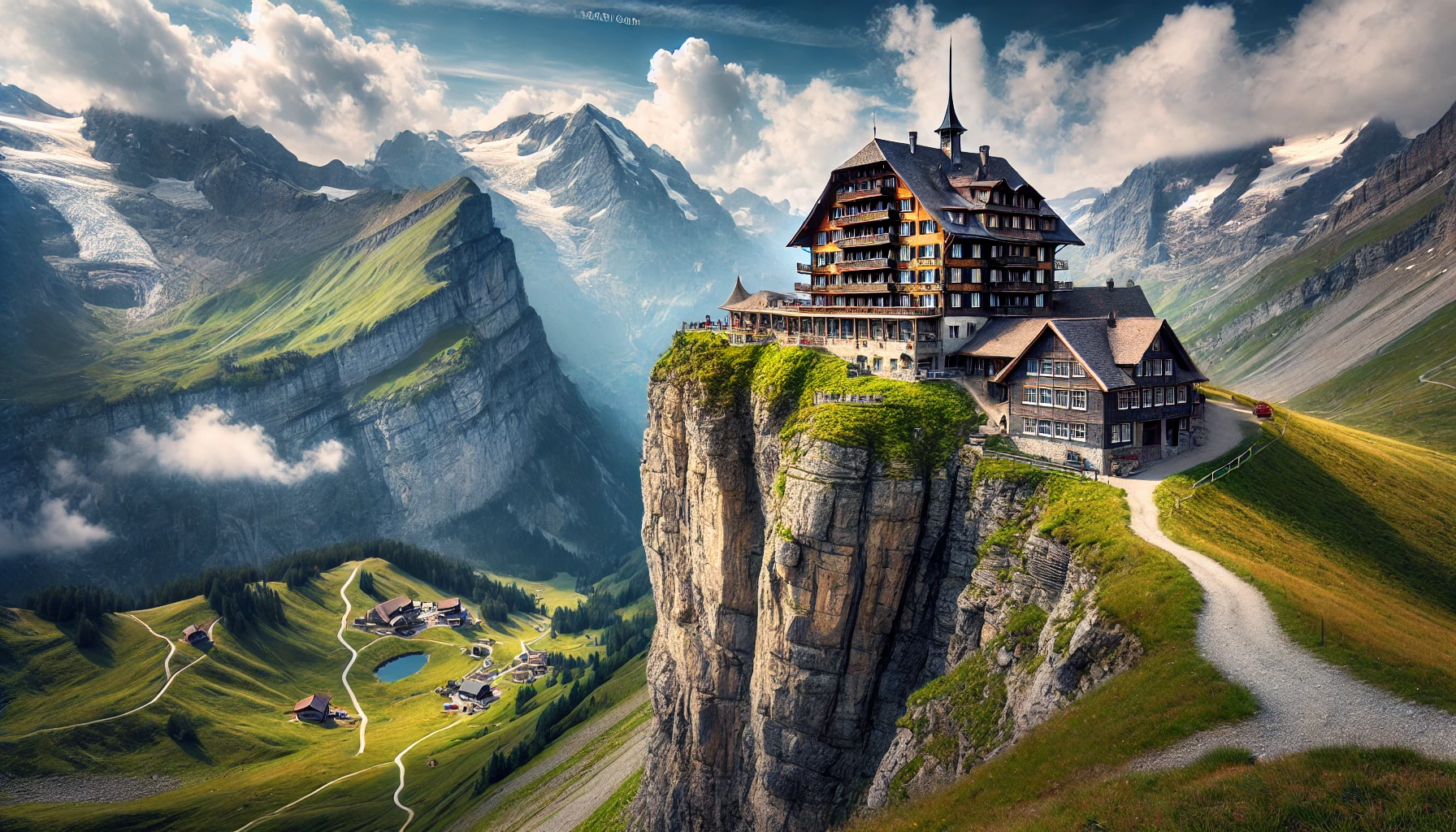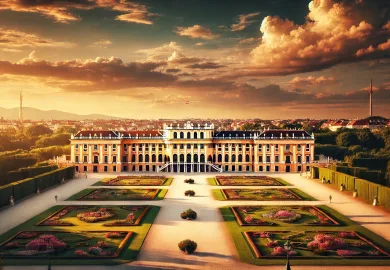
Nestled in the heart of the Swiss Alps, the Escher Cliff Hotel is a marvel of architecture and nature. Perched on the edge of a dramatic cliff, it offers breathtaking views of Switzerland’s alpine beauty. Whether you’re a nature lover, a thrill-seeker, or someone seeking peace in a secluded mountain retreat, this hotel promises a unique experience like no other.
Situated amidst towering peaks and verdant meadows, the Escher Cliff Hotel beckons travelers with its rustic charm and unbeatable location. But it’s not just the view that draws visitors; the hotel’s history, adventurous access, and unforgettable surroundings make it a true gem.
The History of Escher Cliff Hotel: A Marvel of Mountain Architecture
Constructed over a century ago, the Escher Cliff Hotel has a fascinating history rooted in the adventurous spirit of Swiss mountaineers. Initially built as a modest inn for travelers seeking refuge after arduous alpine treks, the hotel quickly grew in reputation due to its spectacular views and unique cliffside location.
The architecture of the hotel reflects traditional Swiss chalet styles, featuring wooden facades, cozy interiors, and large panoramic windows. These elements were carefully designed to harmonize with the surrounding nature while providing a warm, welcoming atmosphere for visitors. Over the years, the hotel has undergone several renovations to maintain its structural integrity while retaining its historical charm.
Despite its age, the Escher Cliff Hotel remains a testament to human ingenuity, blending architecture with the rugged, untamed beauty of the Alps. Today, it continues to attract guests who appreciate the blend of history, nature, and adventure that this unique location provides.
How to Reach Escher Cliff Hotel: An Adventure in Itself
Getting to Escher Cliff Hotel is part of the adventure. Unlike most hotels, which you can easily reach by car, the journey to this cliffside wonder requires a bit of hiking. The nearest road is several kilometers away, and the only way to access the hotel is by foot. For the adventurous at heart, this adds to the allure, making the hotel a destination for those seeking more than just a relaxing stay.
The hike to the hotel is well-marked, offering stunning views along the way. As you ascend the trail, the anticipation builds, and the hotel gradually comes into view, perched precariously on the cliff’s edge. It’s a sight that feels straight out of a fairy tale, and the journey there only enhances the sense of accomplishment once you arrive.
For those less inclined to hike, there are alternatives, such as taking a cable car part of the way. However, most visitors agree that the effort required to reach the hotel is part of what makes the experience so rewarding.
Activities Around Escher Cliff Hotel: More Than Just a Scenic Retreat
Though the views and peaceful atmosphere are enough to keep many guests content, the area around Escher Cliff Hotel offers a variety of outdoor activities. From hiking and rock climbing to paragliding and mountain biking, there’s something for every adventurer.
One of the most popular activities is hiking along the trails that wind through the surrounding mountains. These trails offer varying levels of difficulty, so whether you’re an experienced hiker or a beginner, you’ll find a route that suits your abilities. Each path rewards hikers with breathtaking views, from crystal-clear mountain lakes to snow-capped peaks.
For those who prefer a more adrenaline-pumping experience, the region is renowned for its rock climbing opportunities. The cliffs surrounding the hotel offer challenging routes that attract climbers from around the world. And if you’re new to climbing, local guides are available to help you navigate the terrain safely.
A Stay at Escher Cliff Hotel: Rustic Comfort with a View
Staying at the Escher Cliff Hotel is an experience in itself. The rooms are designed to offer maximum comfort without detracting from the natural beauty that surrounds the property. Large windows allow guests to wake up to the sight of the mountains bathed in morning light, while the sound of the wind and distant waterfalls creates a serene soundtrack to your stay.
The hotel offers a range of rooms, from more basic accommodations for hikers and adventurers to larger suites for those seeking a bit more luxury. All rooms are equipped with modern amenities, but don’t expect extravagant frills. The focus here is on simplicity and letting the stunning environment speak for itself.
In the evenings, guests can gather in the cozy dining area to enjoy a hearty meal made from locally sourced ingredients. The menu is designed to reflect traditional Swiss cuisine, offering dishes like fondue, raclette, and rosti, along with a selection of fine Swiss wines.
Why You Should Visit Escher Cliff Hotel: A Once-in-a-Lifetime Experience
Escher Cliff Hotel isn’t just a place to stay; it’s an experience that stays with you long after you’ve left. Its unique location, perched on the edge of a sheer cliff, offers a sense of isolation and peace that’s hard to find in today’s busy world. Whether you’re sipping coffee on the terrace while gazing at the Alps or hiking up the rugged trail to reach the hotel, every moment feels like a small adventure.
Many travelers come to Escher Cliff Hotel to disconnect from the digital world and reconnect with nature. The limited cell service and absence of distractions allow guests to fully immerse themselves in the beauty and tranquility of the mountains. This sense of escape, combined with the hotel’s rich history and scenic surroundings, makes it a destination unlike any other.
For those seeking a romantic getaway, an adventurous retreat, or simply a break from the ordinary, Escher Cliff Hotel offers an unforgettable stay. It’s not just a hotel; it’s a gateway to experiencing the majesty of the Swiss Alps in a way that few other places can offer. Whether you’re staying for a night or a week, the memories you make here will last a lifetime.
With its unbeatable views, rich history, and unique access, Escher Cliff Hotel remains one of Switzerland’s most extraordinary destinations.








